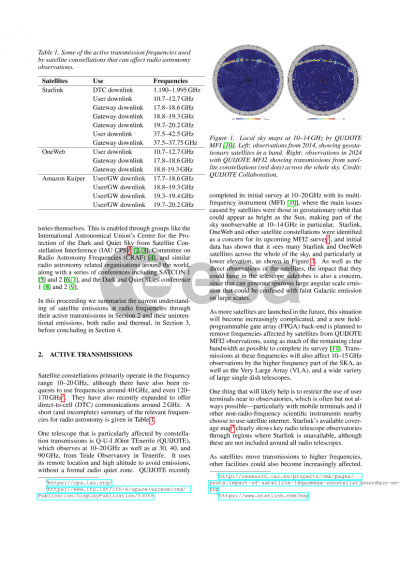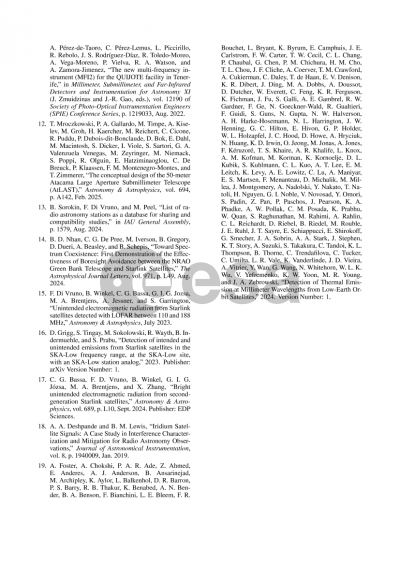Document details

Abstract
Radio telescopes observe extremely faint emission from astronomical objects, ranging from compact sources to large scale structures that can be seen from one horizon to another. Satellites actively transmit at radio frequencies (particularly at 10-20GHz, but usage of increasing broader frequency ranges are already planned for the future by satellite operators), and can appear as bright as the Sun in radio astronomy observations. Remote locations have historically enabled telescopes to avoid most interference, however this is no longer the case with dramatically increasing numbers of satellites that transmit everywhere on Earth. Even more remote locations such as the far side of the Moon may provide new radio astronomy observation opportunities, but only if they are not similarly affected by satellite transmissions. Improving our understanding of satellite transmissions on radio telescopes across the whole radio spectrum and beyond is urgently needed to overcome this new observational challenge, as part of ensuring the future of dark and quiet skies.
In this presentation we will summarise the current status of observations of active satellites at radio frequencies, the implications for future astronomical observations, and the longer-term consequences of an increasing number of active satellites. This will include frequencies where satellites actively transmit, where they unintentionally also transmit, and considerations about thermal emission and other unintended emissions. This work is ongoing through the IAU CPS.
Preview






